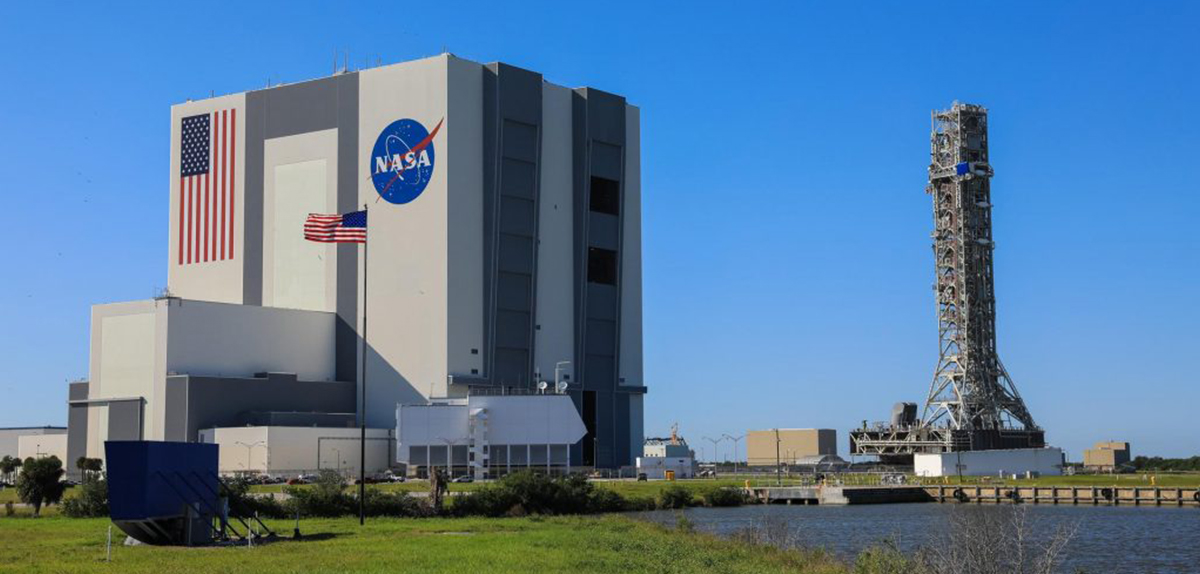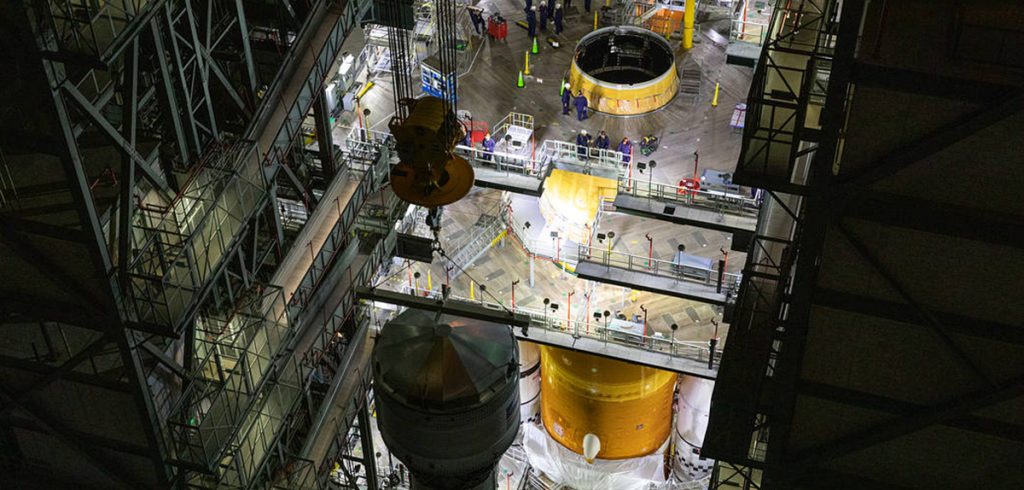In January, nasa announced the delay of the first mission of The Artemis 1 program to reach the moon. According to the press release by the American agency, the teams are engaged in operations to guarantee that the integrated system is prepared to launch the uncrewed mission safely. More specifically, the launch is estimated to take place in June of this year.
These operations include, among others, the assembly of the two main parts of the core stage of the Space Launch System (SLS) rocket that is assigned to the mission.
Initially, the launch was scheduled to take place in late 2021, and was later moved to February 2022, but NASA has recently informed its intention to postpone it until spring. The objective of the Artemis mission is to put humans back on the Moon and position the United States as a leader of a new worldwide race to take humans to our satellite.
In line with this, NASA will move the combined Space Launch System rocket and the Orion spacecraft out of the Vehicle Assembly Building (VAB) to Launchpad 39B to perform tests until March, 2022.

The reason for the delay is that NASA has added additional time to complete closeout activities inside the VAB prior to rolling the integrated rocket and spacecraft out for the first time. The agency clarified that the engineers are working on final closure tasks and flight termination system testing ahead of the final test.
The Artemis 1 mission was conceived as an uncrewed test of the Orion spacecraft and the SLS rocket as an integrated system ahead of crewed missions.
ASA intends for this mission to include a diversity of individuals, genders and ethnicities, and to establish a long-term presence on the satellite while preparing for human missions to Mars. Through it, the United States aims to create a new generation of explorers and lead the space race - especially in regard to space exploration.





